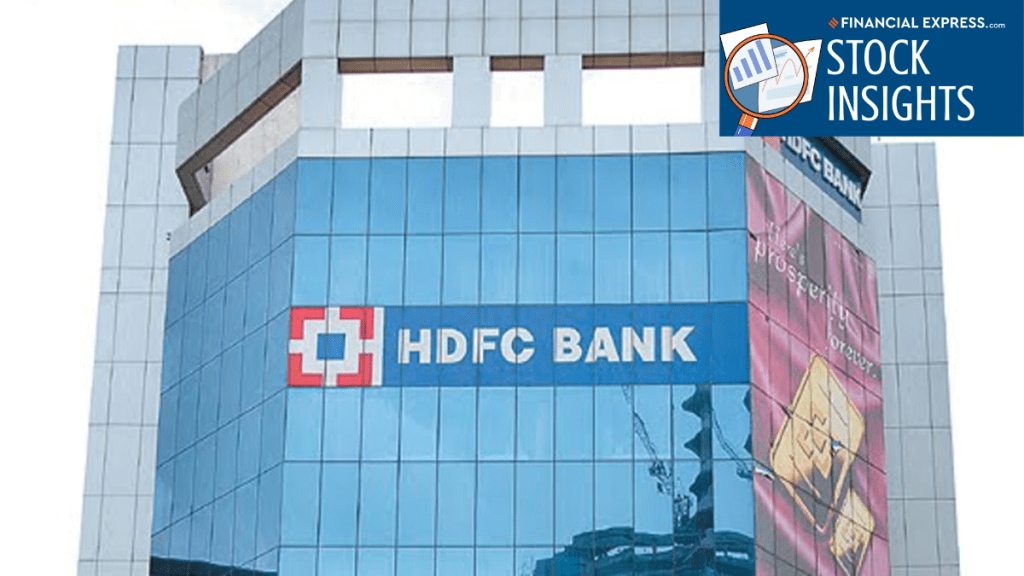The June 2025 quarterly results of HDFC Bank were keenly awaited by investors on Dalal Street as earlier in the week the company had announced that it was planning a bonus issue and a special interim dividend. In addition, with the RBI having recently taken several steps to reduce interest rates in the economy and boost credit availability in the banking system, investors were keen to see the performance of HDFC Bank.
The HDFC Bank stock had ended on Friday 1.5 % lower at Rs 1,957.4, and not too far from its 52-week high of Rs 2,027.4 that was reached on 26 June 2025.
Performance in the June 2025 quarter
For a key operational parameter net interest income (NIM), for HDFC Bank it was 3.35 % of total assets in the June 2025 quarter vis-à-vis 3.47 % a year earlier. The central bank had cut repo rates in its last meeting in early June 2025, and while interest rates on bank loans / credit facilities have come down, interest rates on deposits with the bank come down with a lag.
And for a smaller rival, Axis Bank, its NIM was 3.8 % in the June 2025 quarter vis-à-vis 4.05 % a year earlier. Axis Bank had tightened its bad loan recognition policy in the June 2025 quarter and it affected its various operational parameters.
Meanwhile, HDFC Bank’s advances grew by nearly 6.7 % y-o-y to Rs 26.28 lakh crore in the first quarter of FY26. Axis Bank’s advances grew by 8 % y-o-y to Rs 10.59 lakh crore in the first quarter of FY 26.
The asset quality of HDFC Bank has remained fairly good – its % of net NPAs to net advances was 0.47 % in the June 2025 quarter vis-à-vis 0.39 % a year. And for Axis Bank, the tighter NPA norms resulted in its % of net NPAs of 0.45 % in the June 2025 quarter vis-à-vis 0.34 % a year earlier.
HDFC Bank had made a net gain of nearly Rs 9,128 crore from the offer for sale of its subsidiary HDB Financial Services in the June 2025 quarter, and the bank has made a floating provision of Rs 9,000 crore in the quarter under review. In addition, the bank has made an additional contingent provision of Rs 1,700 during the quarter
As a result, its provisions in the June 2025 quarter amounted to Rs 14,441.5 crore vis-à-vis Rs 2,602 crore a year earlier. The above additional provisions would help HDFC Bank to deal effectively if there is any rise in NPAs, going forward.
Nevertheless, HDFC Bank’s standalone net profit rose 12.2 % y-o-y to Rs 18,155 crore in the June 2025. In contrast, Axis Bank’s standalone net profit of Rs 5,806 crore in the June 2025 quarter fell nearly 4 % y-o-y. Axis Bank has highlighted stricter NPA recognition norms impacted its net profit by Rs 614 crore in the June 2025 quarter.
HDFC Bank has also performed better than Axis Bank for a key operational parameter — HDFC Bank’s return on assets (average) not annualized was 0.48 % in the June 2025 quarter. On an annualized basis, it would be nearly 1.92 % for the full financial year compared to Axis Bank’s return on average assets (annualized) was 1.47 % in the June 2025 quarter.
Investors on Dalal Street
Investor sentiment for the HDFC Bank is expected to be buoyant given the announcement of 1:1 bonus and special interim dividend of Rs 5, pre bonus issuance.
The HDFC Bank stock had ended on Friday 1.5 % lower at Rs 1,957.4, and not too far from its 52-week high.
Outlook going forward
The RBI has taken several steps to boost lending in the banking system. Investors will be closely monitoring HDFC Bank and other leading banks for their ability to protect their NIMs. And HDFC Bank’s 9,499 branches across the country will play a key role in accessing low cost CASA deposits as well as growing its advances going forward.
HDFC Bank trades at a P/E of more than 20 times estimated standalone FY 26 earnings, and Axis Bank trades at a PE of nearly 14 times standalone FY 26 earnings. Axis Bank no doubt trades at a lower valuation however, investor sentiment for the stock is weak given the recent quarterly performance.
Investors could add the stock to their watchlist as they wait for a corrections in stock prices for a potentially more attractive valuation that could make the stock more appealing from a long term perspective.
Disclaimer
Amriteshwar Mathur is a financial journalist with over 20 years of experience. The writer and his family have no shareholding in any of the stocks mentioned in the article.
The website managers, its employee(s), and contributors/writers/authors of articles have or may have an outstanding buy or sell position or holding in the securities, options on securities or other related investments of issuers and/or companies discussed therein. The content of the articles and the interpretation of data are solely the personal views of the contributors/ writers/authors. Investors must make their own investment decisions based on their specific objectives, resources and only after consulting such independent advisors as may be necessary.

